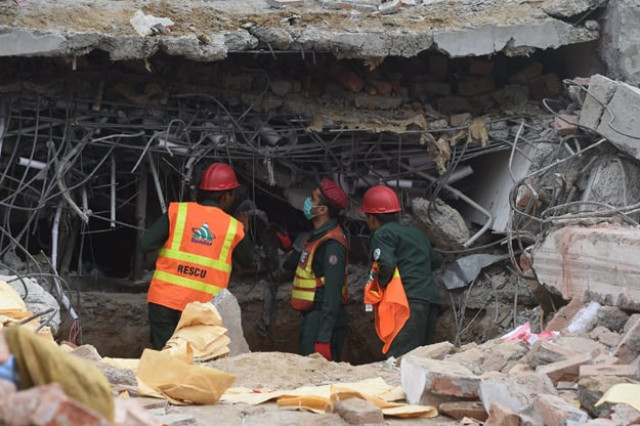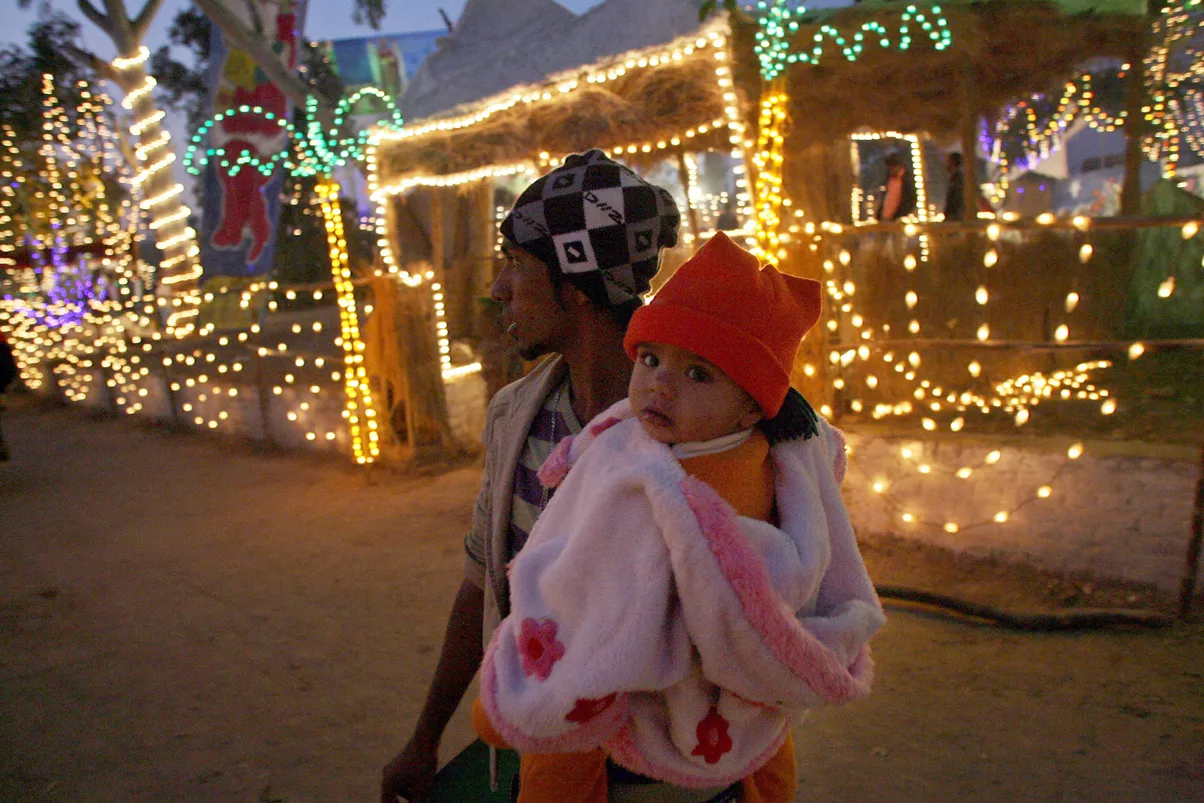Cutting through the smoke
Rescue-1122 calls for implementation of uniform building by-laws and safety measures across the province

PHOTO: AFP
The columns of Rajput Polymers at the Sundar Industrial Estate gave away on November 4 and the roof of the dilapidated building collapsed atop 150 labourers employed at the factory. The death toll eventually reached 45. The government finally decided to take action.
Lack of labour inspections was cited as the main reason for the collapse. A report released by the Labour Department blamed the collapse on illegal construction by the factory owner. The labour inspector for Sundar Industrial Estate was suspended from duty because there was no record of an inspection of the unit.
The Labour Department also procured an application to digitise records of inspections. Department officials said once the application became operational, they would initiate inspections at all 16,000 registered units in the province.
Major tragedies in 2015
This year, 2,814 fire incidents in the Punjab were reported with the Rescue-1122. According to official statistics, 53 people died and 118 were injured. Six siblings died in a blaze that erupted in their house in Shadbagh in May. Their parents were asleep in another room at that time. The eldest of the six was eight years old and the youngest two years old. A similar incident occurred at Ichhra’s Golden Plaza on August 11. One person died and 16 were injured. On September 4, five workers died when the roof of a garments factory in Gajju Mata collapsed on top of them. On September 5, 28 workers died in a boiler explosion at a Ghee Factory in Gujranwala. The roof of the factory had collapsed after the explosion.
Five workers died in a boiler explosion in a factory in Faisalabad in January.
Five labourers died when an oil tanker owned by Haidri Steel Mills exploded in Hadiara on November 9 and five workers suffocated to death and one was injured in a fire that broke out on the third floor of a garments plaza in Johar Town on December 5.
Cut the purse strings
Despite the government’s assurances of taking strict measures to ensure such accidents do not happen, several trade unions are sceptical. Niaz Khan, of the Ittehad Labour Union carpet industry, says fair labour inspections could not take place till political intervention in the process was put to an end.
“Industrial units are not inspected or fined often because politicians have a stake in them,” he says. There are several factories that have boards outside which clearly state inspectors cannot enter the premises without permission. “How are trade unions supposed to function in such an environment,” he says.
In addition to this, he says, forming trade unions in factories is actively discouraged. “Several unionists have been accused of terrorism for trying to unionise or press for collective bargaining power.”
Khan says smaller factory accidents continue to take place throughout the year without solid preventative measures being put in place. He says factory accidents that took place in the latter half of the year were considered more significant because of the high death toll.
Putting out the fire
Jam Sajjad Hussain, the spokesperson for Rescue-1122, says that violation of building bylaws was the biggest barrier to their professional response to fire incidents.
Ensuring implementation of building bylaws and pre-emptive safety measures is the first step. “We can criticise and challenge professional capability and skill of emergency services later.”
There is an overwhelming majority of buildings – commercial and domestic – which skirt building bylaws and ignore safety measures like water sprinklers, steel ladder cases and emergency exits, he says.
It’s a shame that these building owners have spent billions of rupees on constructing large structures and skimped at a few thousand rupees to ensure the safety of residents, he says.
“These owners should think twice before blaming the government and emergency services…they need to reflect on their role and realise that had they taken safety measures and followed building by-laws, they would not only have protected their property but also saved several lives.”
Hussain says whenever such an incident occurs people find it convenient to point fingers at the Rescue-1122 and demand that they put out the fire in no time and rescue all the victims. “How can we manage this effectively for buildings where no safety precautions have been taken? There are areas our emergency vehicles cannot reach because of narrow passageways leading up to them.”
He says the Rescue-1122 has a two-pronged strategy to improve its capacity in the coming year. “We are enhancing our capability in a way that we can respond effectively even in areas where owners have ignored building by-laws…one of the ways we’re doing is that to get a turn-table ladder that can reach a height of 300 feet.
Most turn-table ladders in the world do not cross 100 feet, he says. In most developed countries, high rise buildings have a separate passage for emergency vehicles and these vehicles are placed on every sixth or seventh storey, says Hussain.
He says that the government should make a homogenous Land Use and Building Authority and merge multiple development authorities.
This new body should formulate uniform laws and SOPs and must be empowered to take stern action against violators of building bylaws, he says.
The Rescue-1122 spokesperson says the government should also try and break up the hegemony of multiple town authorities as well and implement uniform building bylaws and SOPs there as well.
Published in The Express Tribune, December 31st, 2015.



















COMMENTS
Comments are moderated and generally will be posted if they are on-topic and not abusive.
For more information, please see our Comments FAQ